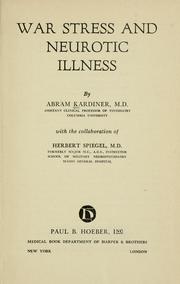Robert Graves 1929
The several decades respit between World War I and World War II were punctuated by Prohibition, the roaring 20s, the Stock Market Collapse, and the Great Depression, so most people put the lessons of the "The War to End All Wars" aside. As anyone who turned on the television set today [09/11/2011] can readily attest, the memories and feelings of psychological trauma aren’t very far below the surface, so the afflicted continued to struggle. A psychiatrist, psychoanalyst, anthropologist named Abram Kardiner saw those psychologically damaged veterans at the Bronx VA Hospital and wrote a book about them published in 1941 [The Traumatic Neuroses of War], a small book that seemed a lot bigger as the war progressed.



Some in the military still believed that the war neuroses were reflective of previous psychological illness, so they screened inductees for any signs of mental instability. It made no difference in the rate of psychological casualties. Then they read Kardiner. His years of talking to the men at the VA had lead him to several conclusions about what predisposed and what protected soldiers. Sleep, food, clean clothes were high on the list. He found that after a short period of time, the soldiers no longer cared or sometimes even knew what the war was about. They were fighting for their fellow soldiers, the guys in their squad primarily. Kardiner suggesting keeping units intact. So the military did that, insuring the integrity of combat units, adding rest time, and beefed up their resupply planning.
From Kardiner’s book and other sources, the concepts of preventive intervention and the idea of "combat fatigue" gradually gained prominence in military psychiatry. Unit cohesion, rest, and resupply were seen as primary prevention. But what about the cases that occurred anyway? They worked with the idea of early intervention and rapid treatment [secondary prevention]. When soldiers showed signs of psychological distress, they quickly sent them away from the front where they were seen by "psychiatrists" [AKA any doctor not needed for combat wounds].1
They gave them clean clothes, a glass of wine, a bed, a movie or USO show – anything to break the "combat fatigue." After a rest, they returned most to the lines to their own unit. The result was striking. Instead of only being able to return 18% before, they returned over 80%. And the returned soldiers did not "deteriorate" as they had in World War I.
While the reported success was probably exaggerated [based on what happened when a lot of them came home], it was still a major advance, and became the basis for the concept of "Crisis Intervention" and ultimately informed the Community Mental Health Movement that came in the 1960s. The idea was sound. In an emotional crisis, pull out all stops to stabilize the afflicted person, then return them to function before they become indolent and despondent. It even underpins the idea of out-placement training. "Your job now is getting a job. Get up early and get to work!"
It became military protocol, but broke down a bit in the Korean War, and then a lot in Viet Nam, probably because of some of the unique factors in that war. There was less esprit de corps, much more dissention about the war, unit cohesion was hard to maintain in the jungles, the enemy was impossible to distinguish from the civilian population, etc. Whatever the reasons, the magnitude of Post Traumatic Stress Disorder resulting from the Viet Nam War is now legendary [again, only broad strokes].
We all learned some things from the Viet Nam War. There was much more support for the Afghanistan and even the Iraq invasions because of the 911 al Qaeda attack on New York. But even Americans who opposed either of those wars were careful to support the troops. Mental Health support was better than ever before. But there was a new factor unlike in previous wars, we had an all-volunteer army. More than that, National Guardsmen were deployed as if they were combat troops. And in order to maintain adequate troop levels, the military increasingly relied on multiple deployments for individual soldiers – offering tempting incentives for staying in the military or joining up. It was a recipe for disaster – understandable from a manpower point of view but a predictable nightmare from a mental health perspective.
Sorry, the comment form is closed at this time.